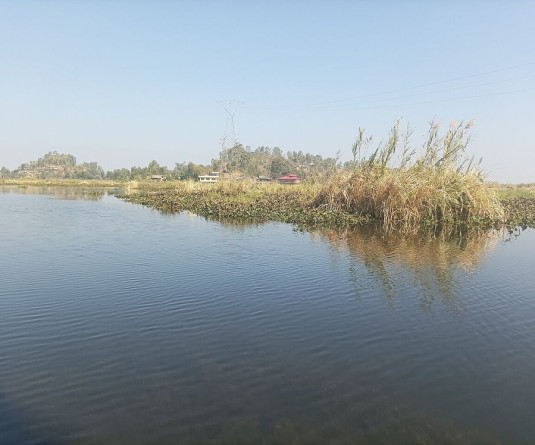
It was a bright pleasant evening after the shower was done. A handful of us retired but not tired friends, sat in a cozy sun lit common lounge reminiscing about life in general. Then this topic came up. My friends seemed to have found it meaningful enough to strongly advocate that I write about it and have it shared with a wider circle. I am perhaps the last man on earth qualified to tackle a subject that I am about to address, but in deference to them here we go:
You must have sometimes wondered how the American Missionaries ever got the wind of Nagas’ existence. Of all the people living in this planet, what persuaded them to even bother to focus their attention on the likes of us? They surely must have had ample choices to work in the comfort zones, enjoying all the conveniences of life that their advanced Nation could offer them. There was no humanly explainable reason for them to venture into the wilderness of the Naga country. Imagine them traversing jungle tracks over hills and mountains to penetrate villages perched upon hilltops; Then work with the people still primitively struggling against nature for survival and sporadically head hunting one another as a way of life. Imagine their circumstance of having to interact with the inhabitants without a working knowledge of the spoken dialect of the tribe concerned. Then define real time danger, insecurity, inconvenience, discomfort and difficulties…they suffered through it all and even gave their lives for the mission. What made them so determined and willing to brave the elements? Why in the name of God did they do that? Oh yes! They did it in the name of that Almighty God. They were a breed of true Christians who lived by example, convicted by the Holy Spirit which gave them that wonderful strength of commitment to stretch their hand and lift the fallen souls in darkness.
How often do we see the forest but not the tree? These American Missionaries not only saw the wild impenetrable forest but concentrated their attention on that one little tree. They were certain that an unhealthy tree would add up to an unhealthy forest and vice versa. They therefore began their mission work with the raw individuals in their sight and whoow! …what a miracle they performed at the end of the day. They transformed a people from animism to Christianity. Just ponder on this: Had they not come when they did, the Nagas would have been a different race entirely swept away by the mainland religion as is so evident in Arunachal Pradesh.
Yet look at us today. How fortunate we are to have been introduced to a God who is sssooo patient. Otherwise a very high percentage of our population would have been continuously wiped out in the aftermath of each election that we have had. Consider these perspectives: Over the years did the NBCC, along with all the Tribal Mission Field affiliates, focus more attention on the forest and forget the tree? In their enthusiasm to expand the mission parameter did they overlook the necessity of painstakingly grooming the caretakers (Pastors/ Evangelists etc.)? After all, they are the key personals in the field who fertilize the crops. A healthy or unhealthy forest will greatly depend on their committed inputs. I may be wrong in my assumption but think about it anyway. This is the problem statement aspect.
Now what is the vision statement? I still remember the day I had visited the Impur Mission Compound (2008) to check out the potentiality for Tourism / Arts and Culture. I had been envisioning the possibility of Impur becoming a real ‘pilgrim center’ as I walked through the pages of history nostalgically wondered what the environment might have been like during the times of my father Khelhoshe and mother Vitoli who were here as young students way back in 1931. It was a pleasure seeing the neglected bungalows that the Missionaries had built, being renovated at that time. The museum filled with rich archival materials left behind by the Missionaries along with a lot of artifacts of our animistic past, all crammed up in an insufficient space inspired me to at least take up a project to expand the ambiance of the museum. In course of that visit I got to know that a good number of big wigs of ABAM were gathered at Impur, discussing their annual budget. It was a wonderful opportunity for interaction with the people who mattered and so requested for a moment of their time to share a dream. They however were much too engrossed with the problem in hand and obviously worried about their going home schedule as well since it was the later part of the evening. They couldn’t spare the time. To this day, I deeply regret this lost opportunity.
This was the dream I had in mind: Impur was the main base from where the American Missionaries reached out to other tribes...the Lothas, the Sumis, Sangtam, Yimchungrer, Chang and so on. They all now have their respective Mission Fields. ABAM ought to understand that Impur is a Grandfather establishment of this zone for all practical purpose, and should act like one rather than isolate itself. Impur ought to be declared as a Pilgrim Center. Serious effort should be made to upgrade the archival materials. If we put our heart in it, it ought not to be such an impossible task to retrieve all the critical reports and accounts and observations made by the first Missionaries and make it a vibrant center of study for students and researchers. It ought to open its door and facilitate brainstorming of the Executive Secretaries of all the concerned Tribes, enabling each to exchange experiences and efforts and learn from each other once in a while. Above all, afford the Mission Administrators to refresh their minds about the kind of commitment and sacrifices made by the first Missionaries and revive their spirit of service and responsibilities with equal commitment. Revisiting the roots in the archive can become a great blessing.
Many of the Tribes have their own Theological Collages as well. For instance we have the Clark Theological Collage in Aolichan, Mokokchung; the Anderson Theological Collage in Aizuto, sister institutes at close proximity. What is saddening is that these two institutes have had absolutely no inter-active linkage, academically or otherwise. If only the Principals of these two institutes could coordinate exchange visits and work out an annual calendar of competitive activities in academics, music, debates, dramatics etc. how much more would such opportunity of exposure, competition and sharing enhance the spiritual value of the student, majority of whom come from the rural sector. A visit to Impur as a compulsory curriculum to absorb the kind of commitment the first American Missionaries had shown, so richly recorded in the archives. Consider how many theologians pass out from these institutions year after year to join the Ministry. Their academic knowledge may be sound but what about the quality of their personal commitment? This also needs systematic nurturing. If these fresh youngsters clamor for convenient stations rather than take up their assignment willingly anywhere they are needed, should it not be a reasonable indicator towards the shortfall of commitment level? If we put our mind to it, Impur has a lot to offer the Christian community but ABAM has to first wake up and open the door.
Kohima Mission Center also qualifies equally if not more, as the grandfather establishment for the rest of the other Tribes. The same philosophy of Impur applies.
Taking this issue to a higher plane, can NBCC not take the responsibility to: (1) Create a Central Christian Museum cum Library just as the State has a Cultural/heritage museum? An open mind would find an inspiration getting an insight to our beginning; A Central Christian archival wing, seriously replenished with archival documents/ photos/video and audio segments as a study center for students and researchers? (2) Coordinate meaningful State Level competitive calendar of activities for the participation of all Theological Collages in Nagaland? This should bring out the best and the brightest to the fore. It is a dire need of the day to produce Christian Leaders who can lead with a determined commitment and by example like the Missionaries of yore. Training of the trainers should be prioritized and upgraded. This should go a long way to revive the sagging morale of the caretakers of the Mission and invigorate the masses towards a more positive living.
Call it a starter of a thought process. Substantiate it further so that we are able to see the forest and the tree.
Khekiye K. Sema IAS (Rtd)
____________________________________________
Readers may please note that the contents of the articles, letters and opinions published do not reflect the outlook of this paper nor of the Editor in any form.




